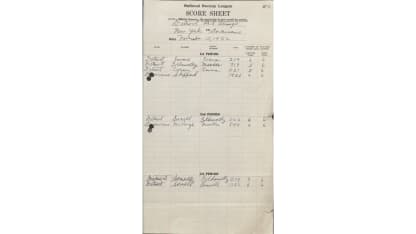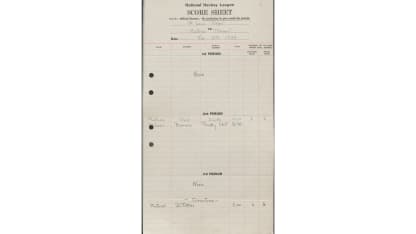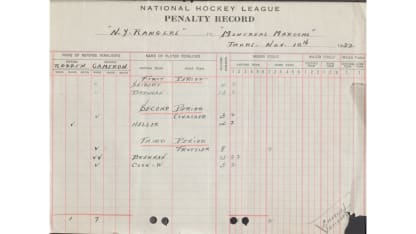Benny Ercolani, the NHL's chief statistician, has worked for the League for more than four of its 10 decades.
The way the NHL tracks statistics has evolved with time and technology. Ercolani and his team -- most notably Brendon Crossman, Stuart McComish, Luc Coulombe and Neil Pierson -- had to bring the past into the present.
When the League began in 1917-18, it tracked goals and assists. Times were added to the official scoresheet in 1922-23. Over the years, more information was included: times and types of penalties, shots by individuals, saves by goaltenders, who was on the ice when goals were scored, and so on.
Official scorers used to send telegrams to the NHL office in Montreal listing only goals, assists and penalties and then mail more detailed handwritten scoresheets, penalty sheets and lineups. Email hadn't been invented yet. Stats were handwritten in large ledger books.
The League hired its first official statistician in 1963 and installed its first photocopier two years later. It started computerizing statistics in 1971-72. Stats had to be tabulated by a key-punch operator and transmitted via a long-distance dial-up connection from the home team. Think about that next time your Wi-Fi is slow.
By 1984-85, the NHL had an electronic stats system, and as the years went on, it became more sophisticated.





















